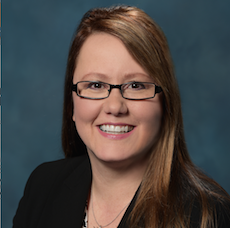
At a time when the senior living industry is facing a critical shortage of workers across various job responsibilities and some workers are pushing for minimum wage increases in their states, could disclosing the discrepancy between the compensation of a company’s CEO and the median compensation of its employees exacerbate mounting tensions?
That is exactly the situation some companies may be facing with a Securities and Exchange Commission rule mandated under the Dodd-Frank Wall Street Reform and Consumer Protection Act that was signed into law in 2010 after the global financial crisis in 2007–2008.
The rule requires most public companies to calculate and share the pay ratio in reports to the SEC in which they disclose executive compensation, starting with the first fiscal year beginning on or after Jan. 1, 2017. So we can expect to see this information next year unless the federal government steps in (more on that later).
Of course, public companies already disclose executive compensation in SEC filings. With a little digging, for example, anyone can discover that in 2016, Brookdale Senior Living CEO Andy Smith received a base salary of $954,000 and total compensation of $2.6 million, Capital Senior Living CEO Larry Cohen had base pay of $758,000 and total compensation of $3.7 million, and Five Star Senior Living’s Bruce Mackey made $300,000 in base pay and a total of $1.2 million.
The newly available information will show how CEO compensation compares with that of average workers, although as with current reporting, flexibility exists in how companies arrive at their numbers. Still, it’s one thing to know in general that leaders are paid much more than the rank and file — one estimate holds that nationwide in 2016, U.S. CEOs earned 341 times the pay of the average worker — but it’s another to see the ratio from your specific employer.
Writing in the Harvard Business Review, London Business School finance professor Alex Edmans, Ph.D., explains that the idea behind the SEC rule is that “[f]orcing disclosure will shame firms into lowering the ratio; investors, customers, and employees can boycott firms with overpaid bosses.”
The rule, however, Edmans says, actually could be bad news for lower-level workers. Companies that want to improve their pay ratios, for instance, may outsource some jobs, hire more part-time workers rather than full-time ones, ramp up automation where possible, or increase pay but cut other benefits, he says.
Edmans’ solution? “Rather than bringing the CEO’s pay down, reform should incentivize the CEO to bring everyone else’s up,” he argues.
It’s true that only public companies will be affected by this rule, and even those companies may be able to put away their calculators if Congress rolls back Dodd-Frank provisions as had been anticipated. A Washington Post article, however, says that companies can’t assume that a repeal or delay will occur, because the federal government has bigger fish to fry — including healthcare and tax reform — right now.
Even the SEC could have difficulty delaying the rule, according to the Post; if the one Democrat on the commission decides not to show up for a vote, if scheduled, then the commission as currently staffed would lack a quorum.
So it’s probably wise for affected companies to keep those pencils sharpened while also continuing to work with others in the industry to devise solutions to the senior living industry’s overarching workforce issues.
Lois A. Bowers is senior editor of McKnight’s Senior Living. Follow her on Twitter at @Lois_Bowers.



